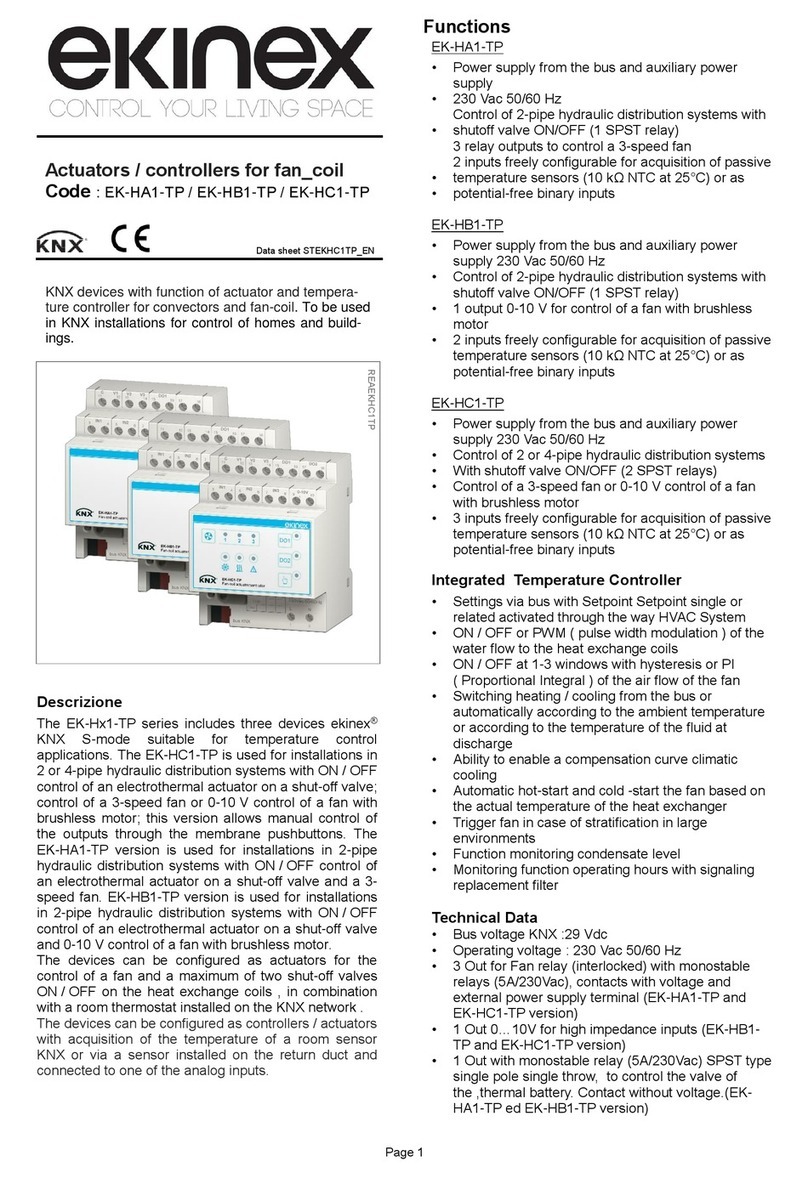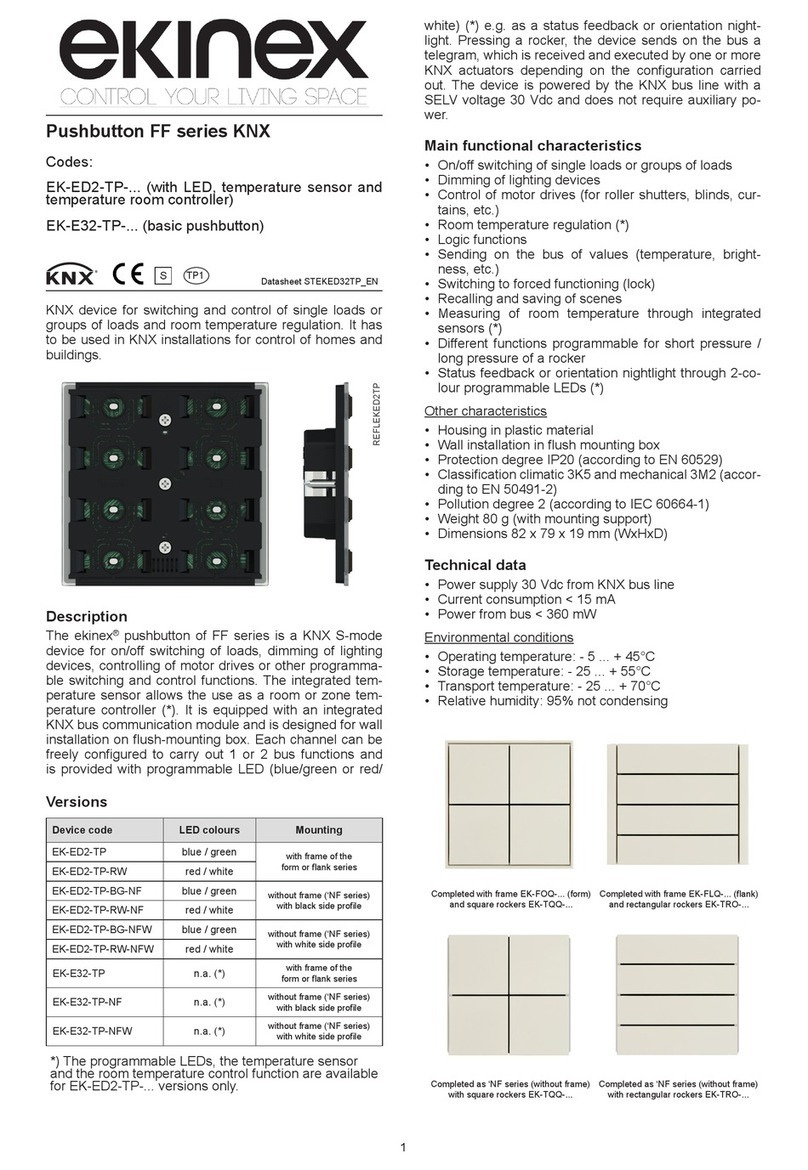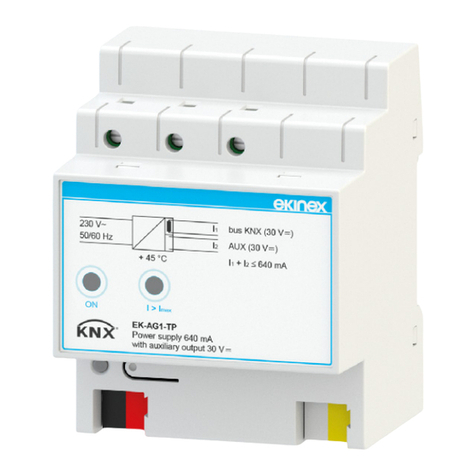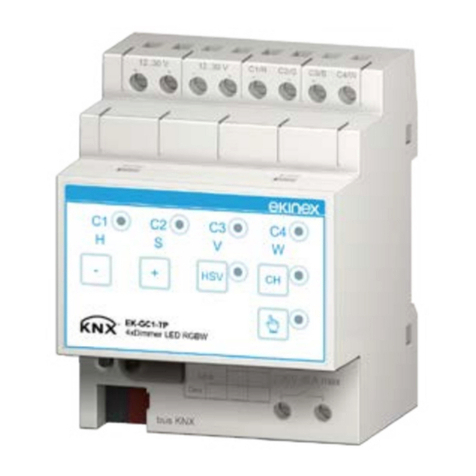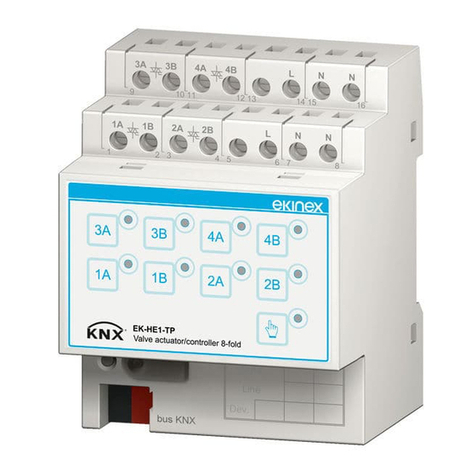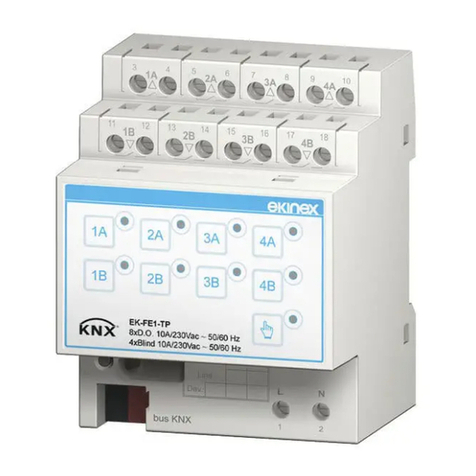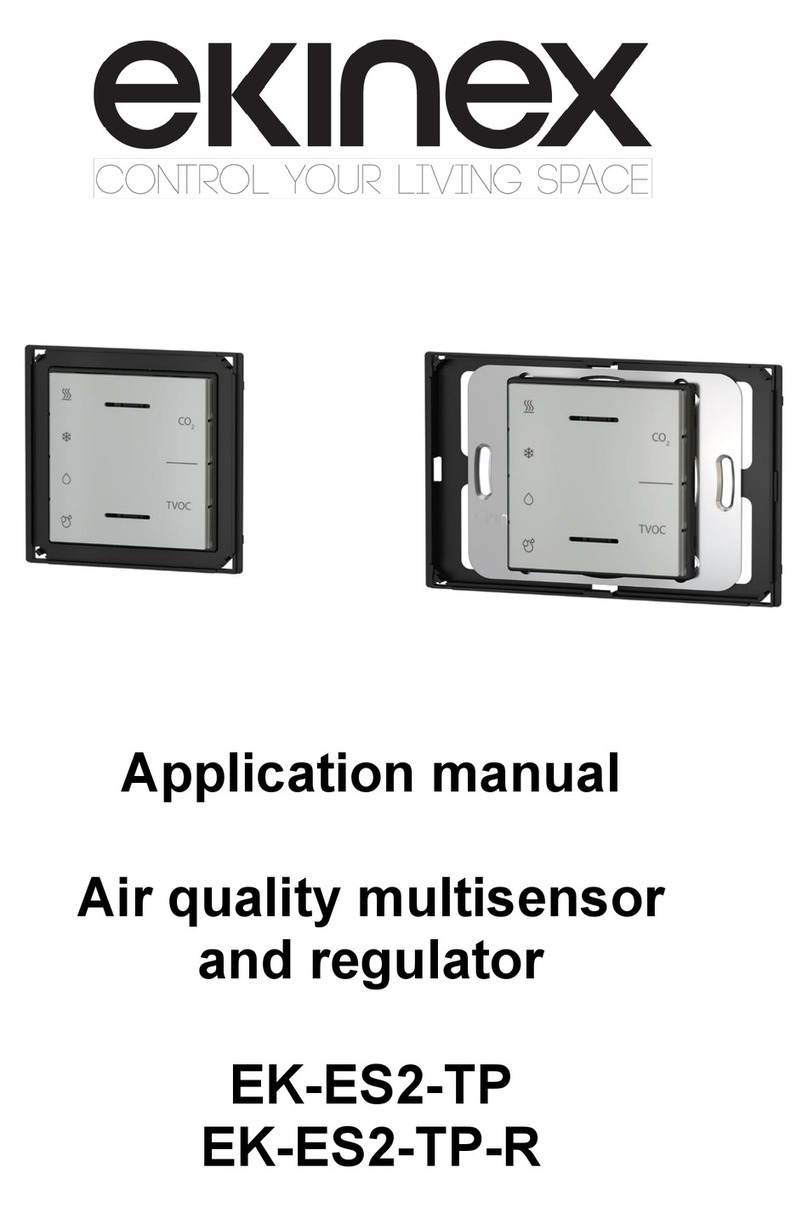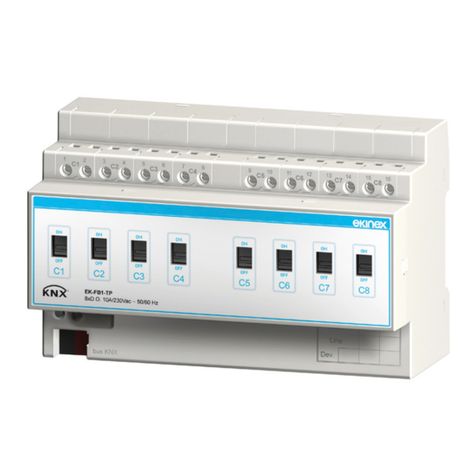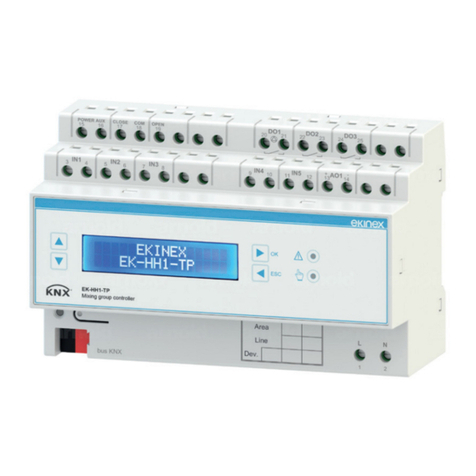
2
For the installation of the device on the rail proceed as
follows:
• with the aid of a tool bring the locking device in the fully
lowered position (1);
• place the upper edge of the rear inner prole on the
upper edge of the rail (2);
• rotate the device towards the rail (3);
• push the locking device upward until it stops (4).
Before removing the device, be sure the inputs have been
disconnected and the bus terminal has been extracted
from its slot. Use a screwdriver to slide down the locking
device and remove the device from the rail.
Mounting
The device has degree of protection IP20, and is there-
fore suitable for use in dry interior rooms. The housing is
made for rail mounting according to EN 60715 in boards
or cabinets for electrical distribution. The installation is in
horizontal position, the correct position is when the KNX
bus terminal and the 110-230 Vac terminals are located at
the bottom and the terminals for the outputs are located
at the top.
Switching, display and connection elements
The device is equipped with a programming pushbutton
and a programming LED, membrane pushbuttons, LED
for status indication and terminals for connecting the KNX
bus line, the 110-230Vac power supply and the outputs.
Switching elements
• Pushbutton (3) for switching between the normal and
programming operating mode
• Pushbutton (7) for switching between the operating mo-
des: forced (pushbuttons on the front panel: active) or
automatic (pushbuttons on the front panel: not active)
• Pushbuttons (2) for forced operation of the output chan-
nels
• Rated voltage (Un): 100-230 Vac 50 / 60Hz
• Rated current (In): max 16 (10) A (both @ 100Vac and
@ 230Vac)
• Max switched power: max 4000 VA @ 250Vac
• Inrush current: 88 A 20 ms
Environmental conditions
• Operating temperature: - 5 ... + 45°C
• Storage temperature: - 25 ... + 55°C
• Transport temperature: - 25 ... + 70°C
• Relative humidity: 95% not condensing
EKINSTGUIDAEKAB1TP
1 2
43
Connection of the KNX bus line
The connection of the KNX bus line is made with the ter-
minal block (black/red) included in delivery and inserted
into the slot of the housing.
Characteristics of the KNX terminal block
• spring clamping of conductors
• 4 seats for conductors for each polarity
• terminal suitable for KNX bus cable with single-wire
conductors and diameter between 0.6 and 0.8 mm
• recommended wire stripping approx. 5 mm
• color codication: red = + (positive) bus conductor,
black = - (negative) bus conductor
Thanks to the pushbuttons located on the front of the de-
vice, the connected loads can be manually controlled in
the absence of voltage on the KNX bus or when the pro-
gramming has not yet been carried out, and in this way it
is possible to check the functioning of the loads. In these
conditions, however, it is not possible to have the status
feedback through the LEDs.
Connection of the 110-230 Vac power supply
The connection of the 110-230Vac power supply (g. a) is
made with the screw terminals located on the lower front
of the device.
1B 2B 3B 8B
1A 2A 3A 8A
EK-FF1-TP
16xD.O. 16(10)A/230Vac ~50/60 Hz
8xBlind 16(10)A/230Vac ~50/60 Hz
4B 5B
4A 5A
6B 7B
6A 7A
34
1A
A B
19 20
1B 21 22
2B 23 24
3B 25 26
4B 27 28
5B 29 30
6B 31 32
7B 33 34
8B
56
2A
A B 78
3A
A B 910
4A
A B 11 12
5A
A B 13 14
6A
A B 15 16
7A
A B 17 18
8A
A B
1 2
L N
bus KNX
230V~ 50/60Hz
1) Terminal blocks for output channels
2) Pushbuttons for forced operation of the inputs
3) Programming pushbutton
4) Programming LED
5) Terminal block for KNX bus line
6) Terminal blocks for 230 Vac 50/60 Hz power supply
7) Pushbutton for switching between manual and automatic operation
8) LED for indication forced / automatic operation mode
9) LED for status indication of the outputs
DCEKFF1TP
1
2
4
5
8
7
6
3
9
Warning! In order to supply the KNX bus lines use
only KNX bus power supplies (e.g. ekinex EK-AB1-
TP or EK-AG1-TP). The use of other power supplies
can compromise the communication and damage
the devices connected to the bus.
!
Note. It is recommended that the installation of the
device always ensure the full accessibility of the
front side to allow the operation of the pushbuttons.
i
Note. In case of failure of the bus voltage, the
switching of the loads is possible only if they are still
powered with the mains voltage 110-230 Vac. The
relay status in case of failure and reset of the bus
can be set during the device conguration.
i
Display elements
• Red LED (4) for displaying the active operating mode of
the device (on = programming, off = normal operation)
• Green LEDs (9) for displaying the switching status of
the output channels (on = closed contact, off = opened
contact)
• Red LED (8) for displaying the operating mode (on =
forced operation, off = automatic operation)
